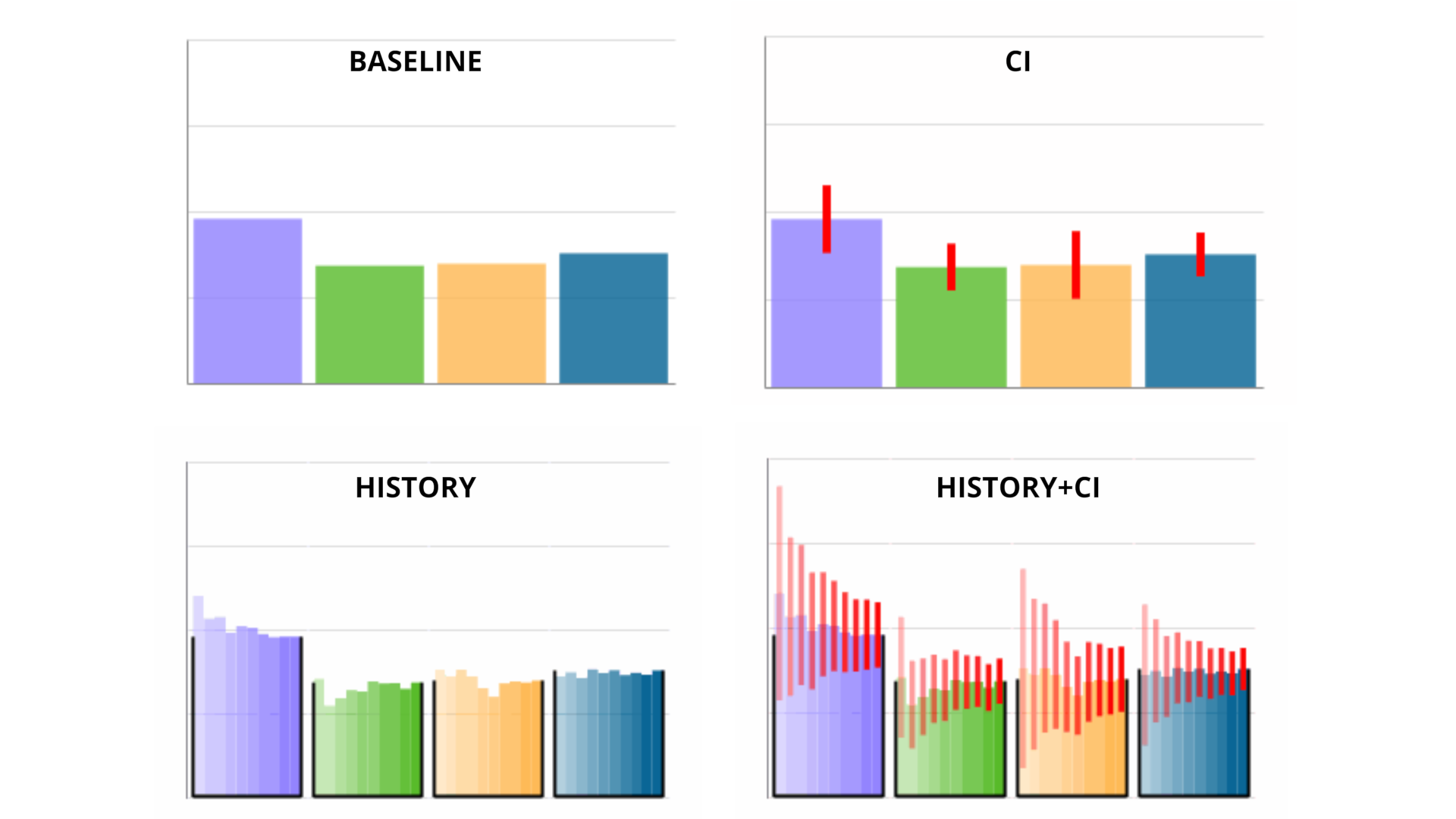Studying Early Decision Making with Progressive Bar Charts
Ameya B Patil, Gaëlle Richer, Dominik Moritz, Christopher Jermaine, Jean-Daniel Fekete
View presentation:2022-10-19T16:45:00ZGMT-0600Change your timezone on the schedule page
2022-10-19T16:45:00Z

Prerecorded Talk
The live footage of the talk, including the Q&A, can be viewed on the session page, Understanding and Modeling How People Respond to Visualizations.
Fast forward
Abstract
We conduct a user study to quantify and compare user performance for a value comparison task using four bar chart designs, where the bars show the mean values of data loaded progressively and updated every second (progressive bar charts). Progressive visualization divides different stages of the visualization pipeline—data loading, processing, and visualization—into iterative animated steps to limit the latency when loading large amounts of data. An animated visualization appearing quickly, unfolding, and getting more accurate with time, enables users to make early decisions. However, intermediate mean estimates are computed only on partial data and may not have time to converge to the true means, potentially misleading users and resulting in incorrect decisions. To address this issue, we propose two new designs visualizing the history of values in progressive bar charts, in addition to the use of confidence intervals. We comparatively study four progressive bar chart designs: with/without confidence intervals, and using near-history representation with/without confidence intervals, on three realistic data distributions. We evaluate user performance based on the percentage of correct answers (accuracy), response time, and user confidence. Our results show that, overall, users can make early and accurate decisions with 92% accuracy using only 18% of the data, regardless of the design. We find that our proposed bar chart design with only near-history is comparable to bar charts with only confidence intervals in performance, and the qualitative feedback we received indicates a preference for designs with history.